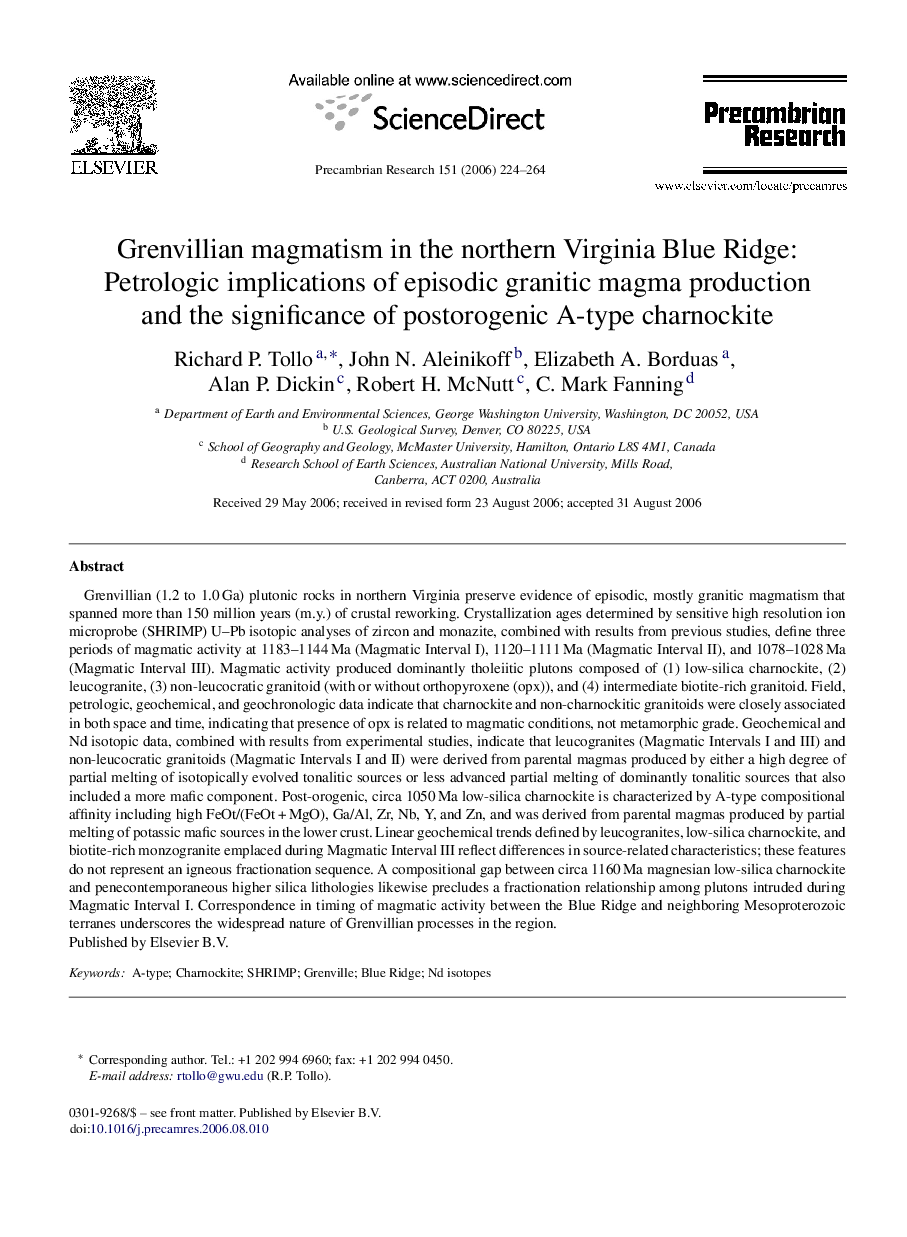| کد مقاله | کد نشریه | سال انتشار | مقاله انگلیسی | نسخه تمام متن |
|---|---|---|---|---|
| 4724720 | 1639726 | 2006 | 41 صفحه PDF | دانلود رایگان |

Grenvillian (1.2 to 1.0 Ga) plutonic rocks in northern Virginia preserve evidence of episodic, mostly granitic magmatism that spanned more than 150 million years (m.y.) of crustal reworking. Crystallization ages determined by sensitive high resolution ion microprobe (SHRIMP) U–Pb isotopic analyses of zircon and monazite, combined with results from previous studies, define three periods of magmatic activity at 1183–1144 Ma (Magmatic Interval I), 1120–1111 Ma (Magmatic Interval II), and 1078–1028 Ma (Magmatic Interval III). Magmatic activity produced dominantly tholeiitic plutons composed of (1) low-silica charnockite, (2) leucogranite, (3) non-leucocratic granitoid (with or without orthopyroxene (opx)), and (4) intermediate biotite-rich granitoid. Field, petrologic, geochemical, and geochronologic data indicate that charnockite and non-charnockitic granitoids were closely associated in both space and time, indicating that presence of opx is related to magmatic conditions, not metamorphic grade. Geochemical and Nd isotopic data, combined with results from experimental studies, indicate that leucogranites (Magmatic Intervals I and III) and non-leucocratic granitoids (Magmatic Intervals I and II) were derived from parental magmas produced by either a high degree of partial melting of isotopically evolved tonalitic sources or less advanced partial melting of dominantly tonalitic sources that also included a more mafic component. Post-orogenic, circa 1050 Ma low-silica charnockite is characterized by A-type compositional affinity including high FeOt/(FeOt + MgO), Ga/Al, Zr, Nb, Y, and Zn, and was derived from parental magmas produced by partial melting of potassic mafic sources in the lower crust. Linear geochemical trends defined by leucogranites, low-silica charnockite, and biotite-rich monzogranite emplaced during Magmatic Interval III reflect differences in source-related characteristics; these features do not represent an igneous fractionation sequence. A compositional gap between circa 1160 Ma magnesian low-silica charnockite and penecontemporaneous higher silica lithologies likewise precludes a fractionation relationship among plutons intruded during Magmatic Interval I. Correspondence in timing of magmatic activity between the Blue Ridge and neighboring Mesoproterozoic terranes underscores the widespread nature of Grenvillian processes in the region.
Journal: Precambrian Research - Volume 151, Issues 3–4, 15 December 2006, Pages 224–264